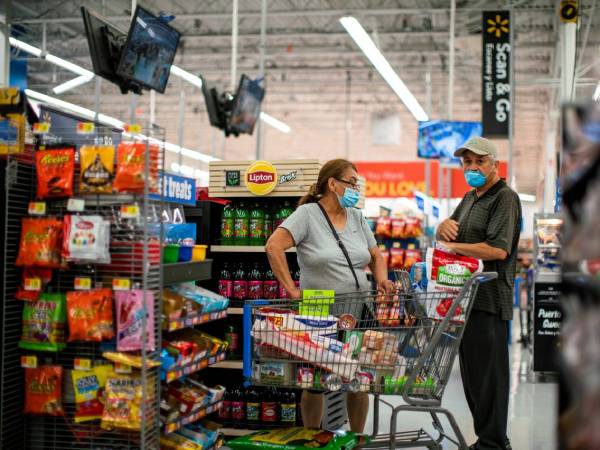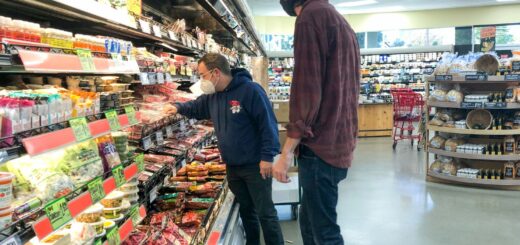Inflation, clarified: Why costs continue to go up and who’s at fault

Confounded with regards to swelling? You’re in good company.
Expansion is, oddly, both staggeringly easy to comprehend and ridiculously muddled.
How about we start with the least difficult rendition: Inflation happens when costs extensively go up.
That “comprehensively” is significant: At some random time, the cost of products will change dependent on moving preferences. Somebody makes a viral TikTok about brussels sprouts and abruptly everybody’s gotta have them; sprouts costs go up.
Expansion is the point at which the normal cost of almost all that buyers purchase increments. Food, houses, vehicles, clothing, toys, and so on To accommodate these essential necessities, compensation should likewise rise.
In the mean time merchants of cauliflower, last season’s popular veg, are basically parting with their products. Those changes are steady.
Expansion is the point at which the normal cost of for all intents and purposes all that purchasers purchase goes up. Food, houses, vehicles, garments, toys, and so forth To bear the cost of those necessities, compensation need to rise as well.
It’s anything but something terrible. In the United States, for the beyond 40 years or somewhere in the vicinity (and especially this century), we’ve been living in an optimal low-and-slow degree of expansion that accompanies a very much oiled purchaser driven economy, with costs increasing around 2% per year, if that. Of course, costs on certain things, such as lodging and medical services, are a lot higher than they used to be, however different things, similar to PCs and TVs, have become a lot less expensive — the normal of the multitude of things joined has been moderately steady.
At the point when ‘expansion’ is an awful word
Swelling becomes risky when that low and slow stew reaches boiling point. Then, at that point, you hear market analysts discussing the economy “overheating”. For an assortment of reasons, generally because of the pandemic, the worldwide economy is as of now in a thorough manner.
What’s more, this is the place where Econ 101 sort of merges with Psych 101. There’s a social financial perspective to expansion, where it can turn into an unavoidable outcome. At the point when costs rise adequately long, purchasers start to expect cost increments. You purchase more products today if you figure they will cost fundamentally more tomorrow. Therefore, request expands, making costs rise much further. Etc. Etc.
In the United States, costs are up 6.2%, the biggest increment since November 1990, and well over the Federal Reserve’s drawn out swelling objective of around 2%.
How could we arrive?
Fault the pandemic.
Notwithstanding, towards the start of the mid year, interest for customer products began to get once more. Quick. Congress and President Joe Biden passed a milestone $1.9 trillion upgrade bill in March, out of nowhere flooding Americans with money and joblessness help. Individuals went out on the town to shop once more. Request went from zero to 100, yet supply didn’t ricochet back so without any problem.
In the spring of 2020, as COVID-19 spread, it resembled the fitting was pulled from the worldwide economy. Production lines all throughout the planet are shut; individuals quit going to eateries; carriers grounded flights. A large number of individuals were terminated on the grounds that things basically vanished for the time being. The joblessness rate in America shot up to almost 15%, from around 3.5% in February 2020.
At the point when you turn off the worldwide economy, you can’t simply plug it back in and anticipate that it should begin murmuring at a similar rate as in the past.
Take vehicles for instance. Watching the COVID-19 emergency kick in, automakers did what any brilliant organization would do: shut down for a brief time and attempt to cut misfortunes. Be that as it may, not long after the pandemic shut down industrial facilities, it additionally supported the interest for vehicles, as individuals stressed over openness to public transportation and abstained from flying. Vehicle makers had whiplash.
Vehicles require an enormous number of parts, sourced from a colossal number of various industrial facilities all throughout the planet, to be worked by exceptionally talented laborers in different areas of the planet. It requires some investment to get that multitude of careful activities back on the web, and it sets aside significantly more effort to ensure representatives don’t become ill.
At the point when ‘expansion’ is a terrible word
Swelling becomes dangerous when that low-and-slow stew gets started up to a bubble. That is the point at which you hear financial specialists talk about the economy “overheating.” For an assortment of reasons, generally originating from the pandemic, the worldwide economy winds up at a thorough bubble at this moment.
Also, here’s the place where Econ 101 consolidations a piece with Psych 101. There’s a social financial matters viewpoint to expansion where it can turn into an inevitable outcome. At the point when costs go up for a long sufficient timeframe, customers begin to expect the cost increments. You’ll purchase more merchandise today in the event that you think they’ll cost obviously more tomorrow. That builds request, which makes costs rise significantly more. Etc. Etc.
In the United States, costs have climbed 6.2% — the greatest increment since November 1990, and well over the Federal Reserve’s drawn out swelling objective of around 2%.
How’d we arrive?
In the spring of 2020, as COVID-19 spread, it resembled reassessing the worldwide economy. Production lines all throughout the planet shut down; individuals quit going out to cafés; carriers grounded flights. A large number of individuals were laid off as business vanished for all intents and purposes for the time being. The joblessness rate in America shot up to almost 15% from around 3.5% in February 2020.
It was the most honed monetary compression on record.
By late-spring, notwithstanding, interest for buyer merchandise began to pick back up. Quickly. Congress and President Joe Biden passed a notable $1.9 trillion upgrade bill in March that made Americans abruptly loaded and joblessness help. Individuals began shopping once more. Request went from zero to 100, however supply couldn’t skip back so without any problem.
At the point when you reassess the worldwide economy, you can’t simply plug it back in and expect it begin murmuring at a similar speed as in the past.
Vehicles require a massive number of parts, from a colossal number of various production lines all throughout the planet, to be worked by exceptionally gifted workers in different regions of the planet. Getting those careful tasks back internet based sets aside time, and doing as such while holding laborers back from becoming ill takes considerably additional time.
Take vehicles, for instance. Automakers saw the Covid emergency starting and did what any savvy business would do — shut down briefly and attempt to moderate misfortunes. However, not long after the pandemic shut processing plants down, it additionally drove up interest for vehicles as individuals stressed over openness on open travel and abstained from flying. Automakers had whiplash.
What happens now?
The main concern for policymakers is to unblock store network bottlenecks to keep merchandise moving at their pre-pandemic speed. That is significantly more difficult than one might expect. Also, who knows what sort of shocks — a resurgent COVID-19 strain, a colossal steel trailer stalling out in a significant stream, a catastrophic event — could block progress.
Market analysts and financial backers in the United States anticipate that the Fed should fix money related strategy by raising loan costs and switching crisis boost, which will slow the speed of swelling. At the point when cash turns out to be more costly to acquire, it can take the hotness from cost increments and return the economy once again to that decent, delicate stew.
Costs and wages are probably going to keep rising great into 2022, authorities and business analysts say. However, for how long and what amount relies upon innumerable factors all throughout the planet.
Disclaimer: The views, suggestions, and opinions expressed here are the sole responsibility of the experts. No STOCKS MONO journalist was involved in the writing and production of this article.



